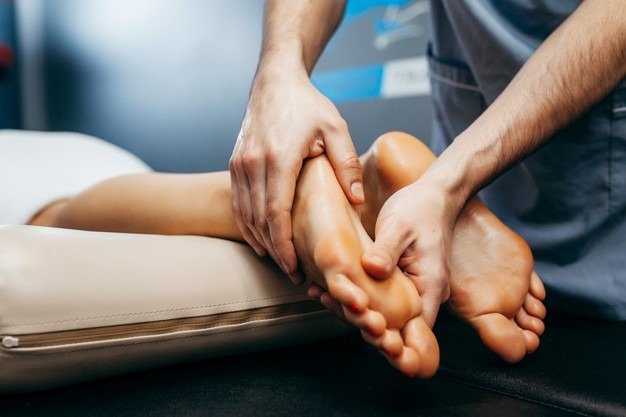- Have any questions?
- +91-9811443717
- [email protected]
Achilles Tendon Disorder- Some health facts

Everything about Achilles Tendon Rupture
February 8, 2021
Anatomy of Ankle Sprain
February 23, 2021Achilles Tendon Disorder- Some health facts

The Achilles tendon is the most prominent tendon in the foot & ankle region and its disorders are quite common for active as well as desk-bound people. A thorough diagnosis can be helpful to appropriately manage the problem otherwise it can take a toll on the patient’s quality of life. Let’s discuss some foot health facts related to Achilles Tendon disorder.
Understanding the anatomy
Achilles tendon is the largest tendon in the body and is made up of triceps surae which is a combination of gastrocnemius and soleus muscle tendons. It is encapsulated in a thin tendon sheath called paratenon from where it gets its blood supply. The tendon itself does not have enough vascular perfusion which makes it more vulnerable to injuries.
Symptoms that need to be considered during evaluation
- A dull ache in the back of the foot
- Reduced strength of plantar flexion and pain in plantar and/or dorsiflexion
- Posterior heel spur
- Inflammation or tenderness in the area where Achilles tendon is located
Other Achilles tendon health facts
- Many health problems can increase the risk of Achilles tendon injuries like chronic renal failure, diabetes mellitus, gout, collagen deficiency, thyroid disorders, lupus, parathyroid disorders, rheumatoid arthritis. Many foot problems like cavus foot, Tibia vara, insufficient gastrosoleus flexibility and strength, limited ability to perform ankle dorsiflexion, varus alignment with functional hyper pronation, etc can also lead to Achilles tendon disorder.
- According to a study based in the US, the probability of acute and chronic tendinopathy among athletes is 8.3% and 23.9%. This number is relatively lesser for normal people (5.9% & 2.1% respectively).
- As per a report, around 1 in 4 acute Achilles tendon ruptures’ cases are misdiagnosed at the initial stage.
- Interestingly, Achilles tendon rupture is more common for people who have blood group O or any family history of this problem
- Gymnasts and tennis players are at a higher risk of Achilles tendon injuries (when compared with foot players). The recorded occurrence rate according to a study is 7-18% in runners, 5% in gymnasts, 2% in tennis players and less than 1% in football players.
- There had been a 40% higher risk of re-rupture after treatment of Achilles tendon via a non-surgical approach with a cast. However, with functional rehabilitation, the rerupture rates have considerably gone down.
- For high level performance athlete who have suffered Achilles tendon rupture, it may take upto 2 years to reach pre-injury activity level
So these were a few facts that were a result of research or observation of renowned experts. But we should not forget that adequate conditioning of this tendon can reduce the chances of Achilles tendon disorder. For a personal consultation on this subject, you can take the help from medical experts. In case if you are looking for an experienced foot and ankle doctor in Gurgaon, then you can contact Dr. Anuj Chawla. He has helped many people in treating complex disorders of Achilles tendon effectively.

